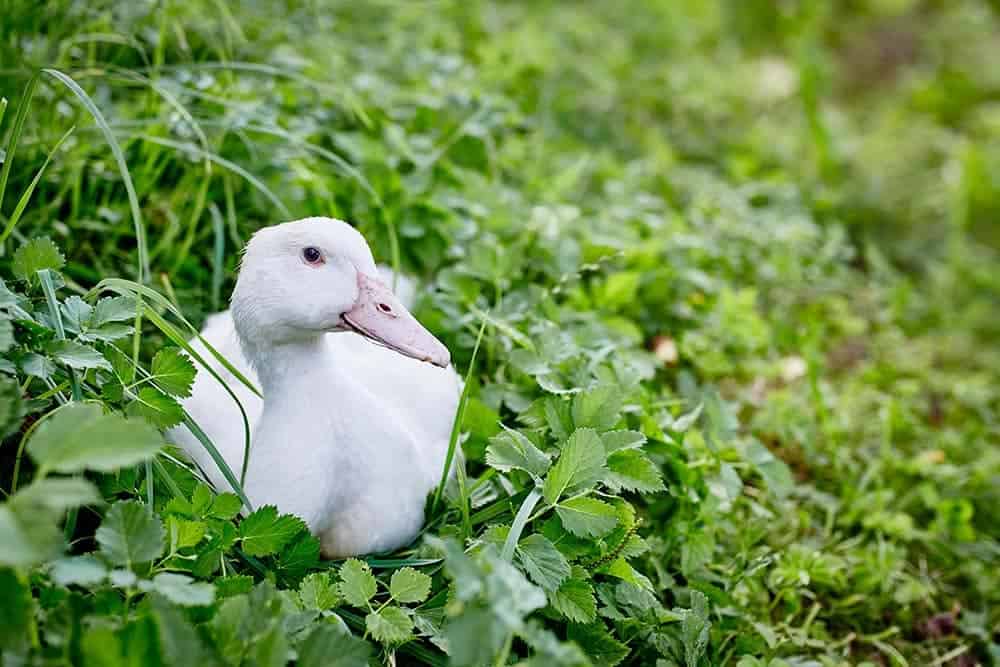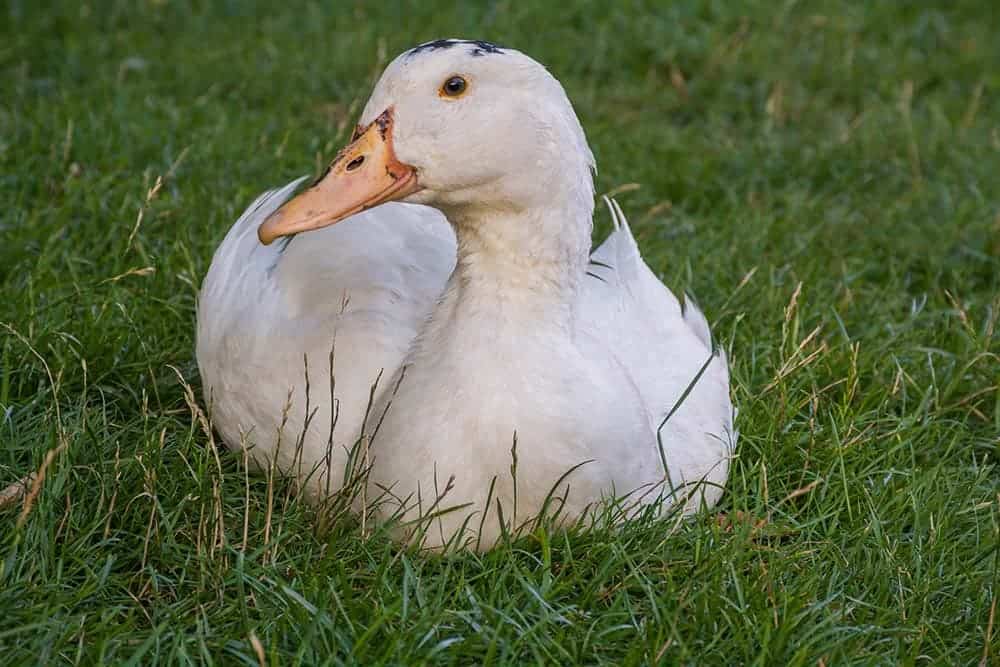Mulard (Moulard) ducks are probably one of the most interesting breeds around. First, they’re sterile hybrids, which were created by crossing two different species of ducks, the Muscovy and the Pekin. This means that while it’s possible to reproduce the breed naturally, most of the time they’re produced by in-vitro fertilization (IVF) in hatcheries.
They’re also a beloved culinary ingredient, prized for their rich, dark meat. In fact, they’re so popular that they make up the vast majority of foie gras sold in the world!
However, there’s more to the Mulard Duck than just being a delicious meal. Keep reading to learn all about this amazing breed of duck.

Quick Facts About Mulard Ducks
| Breed Name: | Mulard Duck |
| Other Names: | Moulard Duck, Mule Duck |
| Place of Origin: | Europe |
| Uses: | Meat, foie gras |
| Drake (Male) Size: | 15 pounds |
| Hen (Female) Size: | 12 pounds |
| Color: | White |
| Lifespan: | 1.5 years |
| Climate Tolerance: | Warm |
| Care Level: | Intermediate |
| Varieties: | Hinnies (when the drake is a Pekin and the hen is a Muscovy) |
| Distribution: | Europe, Asia, USA |
| Rarity: | Common |
Moulard Duck Origins
No one knows for sure who first came up with the idea to cross the Muscovy and Pekin ducks, but since France is one of the biggest breeders of Mulards in the world, it’s likely that it originated there.
From the Muscovy duck, the Mulard inherits its large size, dark meat, and ability to tolerate hot weather. The Pekin duck, on the other hand, gives the Mulard its white plumage and docile personality.

Moulard Duck Characteristics
Mulard ducks are large and heavy birds, with the males weighing up to 15 pounds and the females around 12 pounds. They typically have white plumage with black spots on the top of their heads.
Mulards are also quite the homebodies. This non-migratory breed is perfectly happy living in one area for their entire lives. They enjoy places like lakes, ponds, and other bodies of water that have lots of vegetation where they can look for small fish, centipedes, frogs, crabs, reptiles, and shrimp to snack on.
So, if you’re planning to welcome one to your flock, make sure you have enough space for them to roam. They also like to roost in trees at night, so you’ll need to provide them with an elevated place to sleep.
Uses
Mulard ducks are prized for their meaty breasts, which are some of the largest of any duck breed. In fact, they’re sometimes referred to as the “ribeye of the sky.” Their meat has a rich, earthy flavor with steak-like overtones that make them a popular choice for fine dining.
Because of their size and weight, Mulards are also used to produce foie gras. Foie gras is a French delicacy made from the liver of a duck or goose that’s been fattened up with a special diet.
Since Mulards have such large livers, they’re the perfect bird for this dish. In fact, they make up the vast majority of foie gras sold in the world.

Appearance & Varieties
Most Mulards are usually white all over, with some black spots on their beaks or on the top of their heads. Some ducks may also have black spots on their bodies or wings.
They also have pink beaks and wattles, as well as orange feet and legs. Their eyes are brown, and they have a flat tail that’s slightly longer than their body. Mulard ducks are beautiful, especially when full grown.
Mulards come in two varieties: the classic Mulard and hinnies. Regular Mulards are the result of breeding a Muscovy male with a Pekin female, which is the standard hybrid. Hinnies, on the other hand, are produced when you breed a Pekin male with a Muscovy female. Hinnies are typically smaller than Mulards and have less meat on their bones.
Population, Distribution, and Habitat
The Mulard duck is a relatively common bird thanks to its popularity as a food source. They’re raised commercially all over the world, with the majority of them coming from France. Mulards can also be found in North America, Europe, Asia, and Australia.
This breed is pretty healthy, but they thrive best in warm climates. They’re not too fond of cold weather and are susceptible to drafts, so they need to be kept in an environment that’s relatively stable in terms of temperature.
Mulards also like to have access to lots of water. They’re good swimmers and often spend their days swimming around in ponds or lakes. If you’re keeping them as pets, make sure you have a pond or other body of water for them to enjoy.
Are Moulard Ducks Good for Small-Scale Farming?
You’ll probably want to choose a different duck breed if you’re planning on raising ducks for meat on a small scale. Since they can’t reproduce on their own, you’ll need to purchase fertilized eggs or young birds from a hatchery. This can get expensive depending on where you are in the world.
Mulards also require a bit more care than other ducks. They’re sensitive to cold weather and need to be kept in a warm, stable environment. As we mentioned earlier, they also need plenty of space to swim and forage, so you’ll need to have a pond or lake on your property.
Finally, since they’re not prolific egg layers, you won’t be able to count on them to provide you with a steady supply of eggs. For these reasons, we suggest considering other breeds for small-scale farming operations.

Conclusion
In all, the Mulard Duck is a terrific choice for experienced duck breeders. All it takes to keep these beauties happy is a warm place to sleep, lots of water to swim in, and somewhere they can look for tasty bugs and fish. If you have the space and resources to care for them, they make wonderful pets and farm animals.
Featured Image Credit: Liubomyr Tryhubyshyn, Shutterstock
